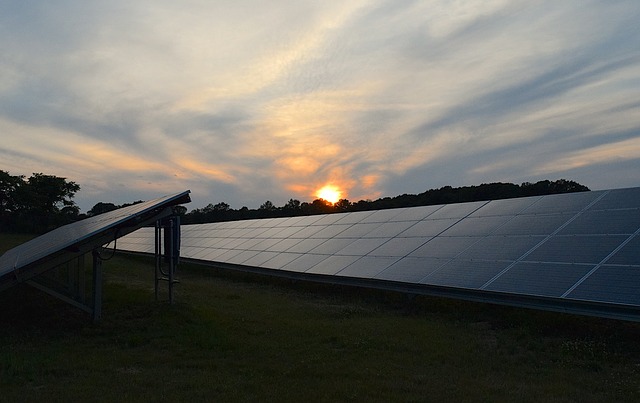Solar energy is the leading source of renewable energy under the United States Emergency Economic Stabilization Act of 2008 which is a government initiative to make renewable energy the primary source of power for homes and industries. As an incentive to ensure that many homeowners adopt the use of solar energy, the federal government formed the Energy Policy Act 2005 that allowed commercial and residential buildings investors to claim a 30% tax credit on PV systems. Since its enactment, the financial incentive has been successful in supporting the transition of the US economy to renewable energy. It has promoted the rapid deployment of solar energy at both the utility scale and distributed levels creating a sustainable clean economy.

What is the solar tax credit?
The Solar tax credit (solar investment tax credit) is a federal policy that supports the growth of renewable solar energy across in the US. The incentive grants a credit worth 30% of the qualifying costs associated with the installation of photovoltaic solar systems. The non-refundable credit is applied to your federal taxes on both hard and soft costs associated with solar energy such as solar consulting fees, freight shipping costs, solar tools and equipment, and installations fees.
How to claim the solar tax credit?
buy grifulvin online http://pmilv.com/wp-content/languages/new/cheap/grifulvin.html no prescription
buy grifulvin online http://pmilv.com/wp-content/languages/new/cheap/grifulvin.html no prescription
As a home owner, whether commercial or residential, you automatically qualify for 30% tax credit even when you do not have enough tax liability to claim the entire credit in one year. You can claim the tax credit for residential solar panels using IRS Form 5696 and IRS Form 3468 for commercial solar systems. However, you will need to meet the following criteria provided by the federal government under EPA
- Your solar system must be installed before December 31, 2019
- You must prove ownership of the solar panels. Any home owners with a PV system under a solar lease or power purchase agreement is not eligible for the tax credit.buy filitra online www.arborvita.com/wp-includes/sitemaps/providers/php/filitra.html no prescription
- You must legally own the home or business premise you want to fit with the solar system; rental property does not qualify.
Proposed changes and impact of the
solar energy tax
Since the enactment of the ITC, the US solar industry has grown by more than 10,000% creating thousands of jobs and injecting billions of dollars into the US economy. Following the mass deployment of solar energy, installation prices have reduced significantly while the technology and installation practices have become more efficient
In 2015, the SEIA advocated for a multi-year extension to the solar tax credit deadline which has been providing stability to businesses and investors as they promote renewable energy in the country. Despite the overwhelming success and popularity of the solar tax credit, following amendments were enacted in the tax schedule;
- 2019- The solar tax credit remains at 30%
- 2020-deductions for residential and commercial solar system installations will reduce to 26%
- 2021-deductions for residential and commercial solar system installations will reduce to 22% deduction
- 2022- Only new commercial solar system installations will qualify for a 10% deduction of the cost of installation. There are no proposed solar tax credits for residential solar system installations.
Nevertheless, commercial and utility scale projects that commence construction before December 31, 2021 may still qualify for the deductions provided they are in operation before December 31, 2023. The IRS issued a guidance on June 22, 2018 stating the requirements that a taxpayer must meet when establishing if the construction of a qualified solar facility has commenced. Utility scale solar investors still qualify for federal tax credits on non-solar PV systems.
New legislation to extend the solar
tax credit deadline
The Renewable Energy Extension Act of 2019 seeking a further extension of the solar energy tax deadline to 2029 was introduced in the House and the Senate on July 25, 2019. The bills are currently in committee, hence there is no definite timeframe as to when it will be tabled in the House or Senate floor for a vote. Should the legislation be passed, the new solar tax credit schedule would be as follows;
| Date construction commences | Residential credit | Commercial credit |
| Before 1/1/2025 | 30% | 30% |
| 1/1/2025 – 12/31/2025 | 26% | 26% |
| 1/1/2026 – 12/31/2026 | 22% | 22% |
| On or after 1/1/2027 | 0% | 10% |
To be placed in service before 1/1/2029
Implication of the extension
The extension of the solar energy tax deadline will provide market certainties for investors to develop long-term projects that drive technological innovation aimed at reducing energy costs for consumers. With solar energy representing only 2.
buy bactroban online http://pmilv.com/wp-content/languages/new/cheap/bactroban.html no prescription
5% of energy production in the US, tax policies that provide stability and investment opportunities for solar energy will continue to play a central role in national debates on sustainable energy, tax regimes, and decarbonisation.

